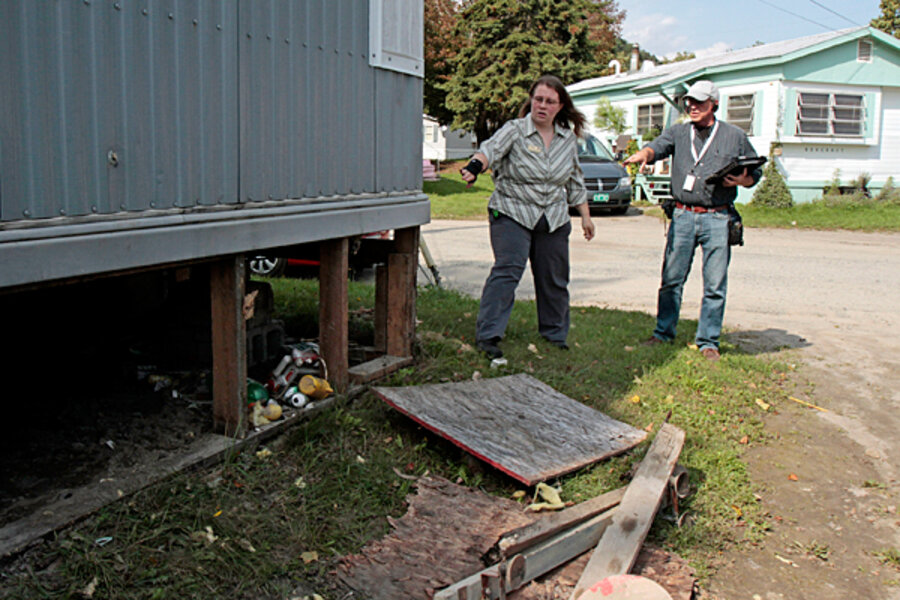Tornados, fires, floods: How much will Congress allot for disaster aid?
Loading...
Texas had massive wildfires, Vermont had record flooding, and some residents of Virginia are still trying to repair their homes after an earthquake.
In fact, scores of states have experienced some kind of major disaster this year.
Still reeling from a difficult debt ceiling fight, and as Republican-led rhetoric heats up about the size of federal government, lawmakers on Capitol Hill are debating how to provide funding for the ongoing cleanup and recovery from the higher-than-usual number of natural disasters this year.
“They will provide the funding and resolve the issue by Sept. 30. It’s just a question of how to pay for it,” says Pete Davis, a former congressional staffer, now a consultant in Washington.
House Republicans want to pay for the Disaster Relief Fund in part by taking some money out of the Obama 2009 stimulus funding designated to provide $1.5 billion in loans to companies doing research on environmentally friendly vehicles. The Democratic-controlled Senate wants to fund disaster relief by tacking it onto the deficit.
And the House and Senate differ on how much to provide.
The House, in a proposal introduced Wednesday, said it would provide $3.65 billion for disaster relief, with $1 billion available immediately. The Senate, which has not voted on its spending bill yet, is proposing $6.9 billion for disaster funding.
The Obama administration says it will need at least the $6.9 billion proposed by the Senate – even before potential disasters strike in the coming year.
In the beginning of September, President Obama estimated that there are $5.2 billion in known disaster relief needs – such as continued aid for tornado-hit Joplin, Mo. In addition, the Federal Emergency Management Agency (FEMA) estimates it will need another $1.5 billion to cover the uninsured losses families and communities suffered from hurricane Irene, which hit the Eastern seaboard in late August.
In the past, Congress has not funded supplemental disaster aid, adding it to the federal deficit instead. According to the Congressional Research Service (CRS), from 1989 to 2010 Congress has spent $140.5 billion on disasters.
“We’ve had disaster relief money every year for as long as I can remember,” says Mr. Davis. “And some years it’s been really major, such as after hurricane Katrina, but it’s never been paid for.”
It's always been tacked on to the federal deficit.
Federal law does not require that the disaster spending be paid for, says budget analyst Stanley Collender of Qorvis Communications. “It is a political demand among Republicans that it be paid,” he says.
A spokesman for Republican House Speaker John Boehner of Ohio could not be reached for comment.
The Obama administration is also unhappy with the way disaster relief is funded.
The Office of Management and Budget (OMB) wrote in 2010, “in the past, budgets assumed that there would not be any natural disasters in our nation that would necessitate federal help.”
Since 1989, there have been only five years when Congress did not add disaster relief funding during the year. The average initial administration request for disaster relief – most of which is used by FEMA – has been $1.7 billion, a number that usually requires a supplement. The fund received an additional $5.1 billion last year.
By assuming there would be no natural disasters, the OMB document said, the omission "permitted past administrations to project deficits that were lower than likely to occur.”
Those arguing for the current system say disasters cannot be anticipated, and therefore they should be funded through supplemental appropriations. In addition, if the fund is carrying a large balance, the president could theoretically shift some of those funds to another program or decide not to spend them to make the deficit look lower.
To change this practice, the Obama administration wanted to budget for large-scale disasters. However, that proposal has not been adopted by Congress.





